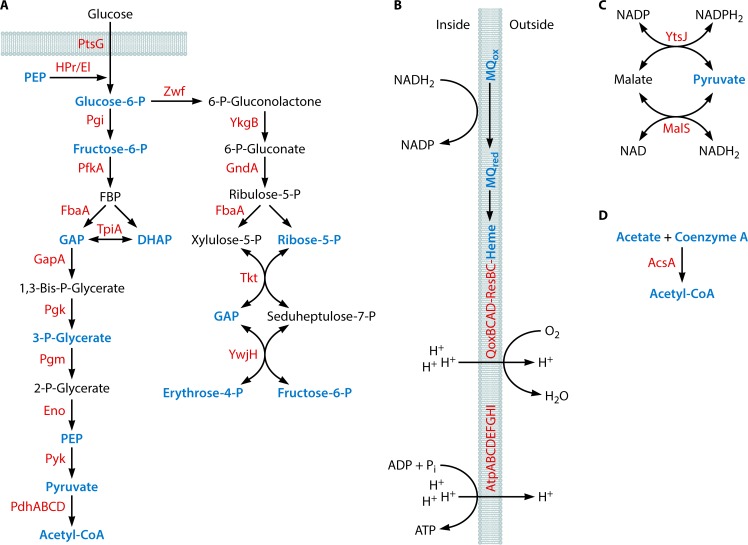FIG 3.
Central carbon metabolism and energy conservation. (A) Glycolytic and pentose phosphate pathways. (B) The respiratory chain and ATPase. (C) The transhydrogenase cycle for balancing NADPH2. (D) Recycling of acetate derived from cell wall metabolism (Fig. 10). The following metabolic intermediates that occur in other pathways are labeled in blue: phosphoenolpyruvate (PEP) (Fig. 4 and 10), glucose-6-phosphate (Glucose-6-P) (Fig. 6), fructose-6-phosphate (Fig. 10), glyceraldehyde-3-phosphate (GAP) (Fig. 7 and 10), dihydroxyacetone phosphate (DHAP) (Fig. 6), 3-P-Glycerate (Fig. 4), pyruvate (Fig. 4 and 8 to 10), acetyl-CoA (Fig. 6 and 10), ribose-5-phosphate (Fig. 5 and 7), erythrose-4-phosphate (Fig. 4), menaquinone/menaquinol (MQ) (Fig. 9), heme (Fig. 8), acetate (Fig. 10), and coenzyme A (Fig. 6 and 10). FBP, fructose 1,6-bisphosphate.

